Whole Grains: How to Safely Feed Whole Grains for Baby-Led Weaning
- Why whole grains are better than refined grains for babies...it has to do with their nutrition value (25% more protein and more of 17 nutrients in whole vs. refined grains!) but they also offer better texture and taste opportunities for babies too
- What types of whole grains babies can safely eat, along with some ideas on how to prepare them because babies without their pincer grasp can't pick up small pieces of cooked whole grain

LISTEN TO THIS EPISODE
Can babies eat whole grains? Can they digest whole grains? Is it safe to offer whole grains? Yes, yes and yes! In this episode we’re looking at why whole grains are why they are an ideal alternative to refined grains for babies who are just starting solid foods with baby-led weaning.
If you are curious about how to make whole grains like quinoa, buckwheat, millet and kamut safe for babies to eat...this episode explains why you want to feed these foods, ideas on how you can make whole grains for babies to eat and tips on additional whole grains to add into your baby’s repertoire.
SUMMARY OF EPISODE
In this episode we’re talking:
Why whole grains are better than refined grains for babies...it has to do with their nutrition value (25% more protein and more of 17 nutrients in whole vs. refined grains!) but they also offer better texture and taste opportunities for babies too
What types of whole grains babies can safely eat, along with some ideas on how to prepare them because babies without their pincer grasp can’t pick up small pieces of cooked whole grain
LINKS from episode
Other BABY-LED WEANING MADE EASY podcast episodes mentioned in this episode:
Want to tackle 20 new starchy foods including whole grains in the 100 FIRST FOODS program? This is a digital program I co-teach with my friend & pediatric swallowing expert Dawn Winkelmann, MS, CCC-SLP. We are 2 baby-led weaning experts who help you select, prepare and offer 100 SAFE baby-led weaning foods. There’s also 8 weeks of live private coaching with Katie & Dawn in case you get stuck and need individual help with your baby’s feeding situation. Click here to enroll in the 100 FIRST FOODS FIELD GUIDE while it’s open for a limited time only.
TRANSCRIPT of episode
RESEARCH LINKS FROM EPISODE
Celiac statistics mentioned in this episode: https://www.ncbi.nlm.nih.gov/pmc/articles/PMC6727179/
WANT MORE BLW INFO?!
SUBSCRIBE to the BABY-LED WEANING MADE EASY PODCAST - new episodes are released on Monday and Thursday and subscribing means you’ll never miss what’s new (+ you’ll get notified about special bonus episodes too!)...subscribe here.
REGISTER for my 100 FIRST FOODS FIELD GUIDE digital program. If you want to push your baby’s palate PAST the simple starter foods & help your baby eat 100 FOODS before turning 1, this is the program for you! It’s co-taught by 2 BLW experts and designed to help you raise an independent eater and prevent picky eating, but enrollment is only open for a limited time. < < CLICK HERE TO ENROLL IN THE 100 FIRST FOODS PROGRAM > >

Latest Episodes
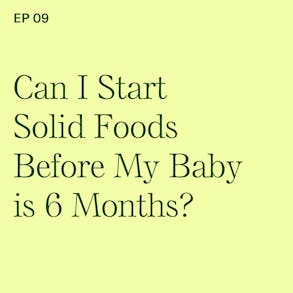
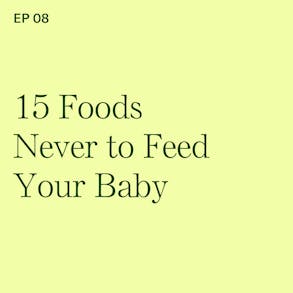
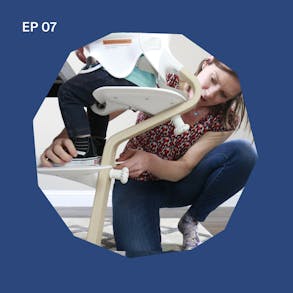
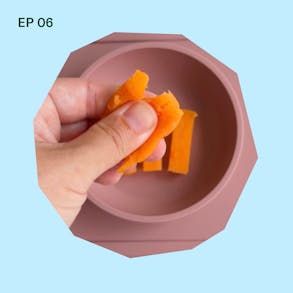
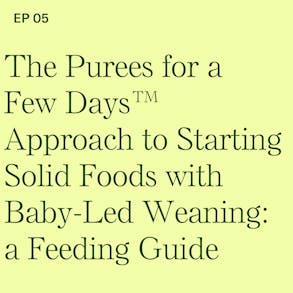
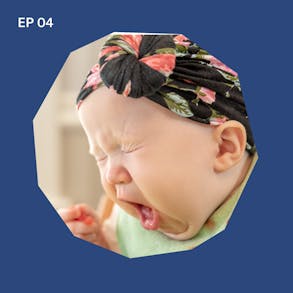
Katie Ferraro (0s):
Refined grains. Yeah, they're convenient and they cook quickly, but there are starch bomb with no other nutrient value. Compare that to whole grains. You've got more of 17 nutrients, 25%, more protein and fiber and fat and iron. It's a no brainer. You've got to be feeding whole grain foods to babies. Hey, there I'm Katie Ferraro, registered dietician, college nutrition professor and mom of seven specializing in baby led weaning here on the baby led weaning made easy podcast. I help you strip out all of the noise and nonsense about feeding, leaving you with the competence and knowledge. You need to give your baby a safe start to solid foods using baby led. Weaning.
Katie Ferraro (43s):
Welcome back. All right. Tell me, honestly, when you hear the term whole grains, what comes to mind? Like do you cringe? And you're like, I know I should be eating more of those or are you like, yes, I love borrow. And I love spelt. I think for a lot of us, when we're in the baby feeding phase, we're like, yes, I know whole grains are important for my baby, but I'm pretty confused about how to safely feed whole grains to my baby. Well, you are in luck because today's episode is all about whole grains and how to safely feed whole grains for baby led weaning. Now, I like to start these mini baby led weaning to training episodes with a BLW tip of the day.
Katie Ferraro (1m 24s):
And so today I'm talking to those parents who might be stuck in the rice pasta and potato rut. Hey, those are sources of carbohydrate. There are just a few of the carbohydrate foods that babies can eat and carbohydrates are important. So I'm not dissing rice, potato or pasta, but there's a ton of other grains out there. Babies can eat and carbs are an important source of calories for babies who are learning how to eat. And yet they do get carbohydrate from some fruits and to a lesser degree vegetables and some dairy products. But we can't ignore like the huge food category that babies can safely eat and where they should be getting their carbohydrates from. And that is whole grains. And I know you guys are hearing some of the myths out there.
Katie Ferraro (2m 5s):
You'll hear people say, well, babies can't eat whole grains. Are there. Sometimes people ask me, I've heard that babies can't digest whole grains. And is that true? And the whole point of this podcast, if you take nothing else away, is that that's not true. It's absolutely not true. There are a few groups of babies who should avoid certain grains. So if your baby has a diagnosed wheat allergy, not you guessing if they have a wheat intolerance or gluten tolerance, I'm talking about confirmed, diagnosed wheat allergy, and don't forget more than 50% of food allergy test results when they're positive are false positives. So if you do have an actual wheat allergy or your baby does rather than don't feed wheat containing foods, obviously now, if your baby has celiac disease, so that's an auto immune disease whereby the baby can't tolerate gluten.
Katie Ferraro (2m 53s):
And that's gluten is the protein found in wheat, rye and barley because it causes damage to the intestine and organs around the intestine. Then don't feed those foods to your baby. Now we should probably do a whole separate episode on celiac disease, but basically if a first degree relative does have diagnosed celiac disease, then yes, that baby is at higher risk than the non-celiac family baby of getting celiac. But really like, I don't want you guys to be scared about it, or even associate whole grain intake with celiac disease. If it's not in your family, because the overall prevalence rates of celiac disease in infancy is actually very, very low. And if you've listened to the podcast for any length of time or followed any of my trainings, you know, I'm always talking about the importance of waiting until your baby is six months to start solid foods.
Katie Ferraro (3m 36s):
But we really know from the data that really early introduction of gluten prior to six months of age, that's actually associated with an increased risk of celiac disease. So just in case you need another reason to wait until your baby is ready to eat solids at six months of age, plus when joined the other signs of readiness to feed. If you do it too early, you actually increase the risk of celiac disease. So tip of the day, don't be scared to feed your baby grains. Preferably whole grains let's bypass the refined white grains for as long as possible. Unfortunately, refined white grains comprise so much of the typical baby's diet. If they're fed commercial baby food, or if they're bred onto what we call the standard American diet has like the most appropriate, but really unfortunate acronym of sad standard American diet.
Katie Ferraro (4m 21s):
But it is sad because it's really high in refined carbohydrates, which are the opposite of whole grains, as you will learn. So hang tight because I'm going to be showing you some easy ideas for making whole grains appropriate and safe for babies to eat starting at six months of age. And I'm not talking about like, oh, instead of white rice cereal, you should feed your baby whole grain cereal. And I'm saying that like a little tongue in cheek and a little facetiously, because honestly there are a lot of pediatricians out there who that's the recommendation instead of spoonfeeding white cereal, you should spoon-feed whole grain cereal. Well, you'd never need to spoon feed any cereal to your baby because at six months of age, babies can learn how to feed themselves. And I'll talk about whole grain cereal.
Katie Ferraro (5m 1s):
Oatmeal is a great one, but you don't need to go be buying special whole grain baby cereals, and like patting yourself on the back hole. At least it's not white rice cereal. Your baby doesn't have to even eat those baby foods. You can if you want to. But I think one of the benefits of baby led weaning is that you can feed your baby modified versions of the same foods. The rest of the family is eating. And I don't know about you, but I'm not eating an expensive whole grain cereal. That's really designed for babies. We don't have to do that. So we're going to skip that and go right into whole grains that babies really can eat. So let's start with the what of whole grains, what are whole grains? I think one of the best resources for whole grains is the whole grains council. And they define whole grains as including foods like wheat and corn and rice oats, barley king loss, sorghum, spelt riders like Alyssa goes on and on and on, but they're referred to as whole grains because they're eaten in their whole form.
Katie Ferraro (5m 54s):
So what does the whole form mean? There's three parts of a whole grain, the bran, the germ and the endosperm. Okay. When you eat a refined grain, the manufacturer, the processors, they throw out the brand, they throw out the German, all you get is the endo sperm. So we'll start there. That's stuff that starchy middle of the grain that has carbohydrate in there, but not a lot of other nutrition now, because we know that that's a nutritionally inferior product by law in the United States, manufacturers are required to put those nutrients at some of the nutrients that they took out back into the refined grains. So they strip them down to nothing. And then they put a little, the nutrition back. It's kind of silly. Why don't we just eat the whole grain to begin with, which has the bran, the germ and the endosperm.
Katie Ferraro (6m 35s):
And why is that better? Because the brand is where the fiber lives, as well as the B vitamins. The germ is where the fat lives, some protein and other vitamins. So when we eat a whole grain, again, we get the bran, the germ and the endosperm, which from a nutritional standpoint is more desirable because without the brand and the germ, it's estimated that about 25% of a grains, protein is lost. And then it's greatly reduced in at least 17 key nutrients, the benefit of whole grains. Again, you're getting that combination of the brand, which is the outer layer of the whole grain and the germ, which is like the seed as well as the endosperm, which is the starch.
Katie Ferraro (7m 16s):
So with refined grains, all you get is carbohydrate starch. You don't get fiber, you don't get protein, you don't get fat. You don't get the important B vitamins. You do to get some. They add them back in at a little bit of iron back into, but with a whole grain, you get the fat, you get the fiber, you get the protein, you get the iron and you get the B vitamins plus the carbohydrate that should be fueling your baby's body. It's a win-win situation. Now, when can we do whole grains for babies? I mentioned that there is a lot of misinformation out there. People will say things like babies cannot digest whole grains. They certainly can digest whole grains. In fact, it's thought that a baby's anatomy is actually capable of digesting the majority of nutrients as early as three or four months of age.
Katie Ferraro (7m 57s):
But of course we don't feed those nutrients at three, four months of age because baby's not safe to swallow anything except breast milk or formula. And just because they can do it doesn't mean they should, because there could be some other negative caveats. I talked about early introduction of gluten, for example, increasing the risk of seizures, iliac disease. So from a physiological standpoint, yes, your baby can digest whole grains. And we start feeding foods other than breast milk or formula at around the six month mark. But sometimes parents will think, well, I should do the fine grains because there's so much a gentler on the baby's gut and that's really not a benefit. And that's certainly not true. There's no data to suggest that digestion of refined grains is easier on them, baby.
Katie Ferraro (8m 38s):
Then the digestion of whole grains. Yeah. It tastes a little bit longer to digest fiber and fat and protein compared to just carbohydrate. But that's a good thing. So how can we feed babies whole grains, if you think about the list of, of whole grains. And if you've heard of things like barley or brown rice, buckwheat Bulger, millet, popcorn, don't feed popcorn to babies. That's certainly a choking hazard, but if you're looking for like a good whole grain snack for you as an adult, heck yeah. Popcorn, unless you go put a ton of butter and salt all over it. But we also think about things like keenwah Amarin, these are examples of whole grains, but they tend to be really small pieces, right? So a baby would require their pincer grasp in order to pick up a very small piece of chemo. And I don't know, even like you and me, I got a great pincer grasp, but I don't want to be eating cake with my fingers.
Katie Ferraro (9m 21s):
So we generally can feed these whole grains, which can be challenging for babies to pick up prior to having their pincer grasp. We can feed them in a fritter format. So I love to take cooked whole grains and make them into fritters, which are fry cakes or patties that have usually an egg or some sort of other binding agent in there. You can mix it with cooked vegetables with other protein. It's a great thing to do. If you have like leftover farro or leftover Bulger, I did a whole episode actually fritters episode 1 43. It was part of my baby led weaning basics. Recently was a series that we did in this episode was how to make fritters for self feeding babies. So I go into more detail.
Katie Ferraro (10m 1s):
They're about fritters using whole grains. And you can check that episode about fritters out. If you go to BLW podcasts.com forward slash 1, 4, 3, so you can do fritters. Another thing that you can do is that many of the whole grains actually make a really nice porridge or hot cereal. So if you look at, you know, different food cultures around the world, most food cultures have at least one porridge concept for them. They generally are made out of a whole grain. They can be refined grains. We do want to stay away from refined grains for the reasons discussed earlier. But if you're, you know, a typical, let's say individual in the United States, you're probably familiar with oatmeal.
Katie Ferraro (10m 41s):
Oatmeal is a wonderful whole grain that when you cook, it is in more of a pure and then something you would pick up with your hands, although watch your baby with oatmeal. They'll try to use the preloaded spoon you're offering, but they're also going to try to eat with their hands. And of course, many other food cultures use different grains in order to make a porridge. So you certainly could do that. I just want you to know that's not the only food that your baby can eat because most people, when they're coming in to the weaning period are like babies, eat rice, cereal, babies, eat cereal. And that's it. And hopefully if you're a student of baby led weaning, you recognize the vast majority of foods that babies can eat porridge or oatmeal being one of them. I like to use oatmeal as a medium to introduce other foods cause potentially allergenic foods.
Katie Ferraro (11m 24s):
In particular, you can stir smooth unsalted, unsweetened peanut butter into cooked oatmeal in order to thin that peanut butter out and make it less sticky air go safer for the baby to eat. You can also do that with almond and other nut butters because we don't serve sticky globs of nut butters to babies. So yes, you're feeding a whole grain, but you're also using it as a medium, in some ways to introduce other potentially allergenic foods. In the case of tree nuts and peanuts, I love to use oatmeal as a medium for introducing things like canned pumpkin. For example, babies love pumpkin oatmeal. And if you're not inclined to like steaming your own fresh pumpkin, you can use a can of canned pumpkin and mix that into the oatmeal.
Katie Ferraro (12m 8s):
You want to just make sure that you are avoiding the pumpkin pie mix because that has added sugar. You want to get the plain canned pumpkin. And if you need more, more information about how to safely feed your baby pumpkin actually have a whole episode it's episode 69, it's called pumpkin five easy ways that your baby can safely eat pumpkin. And that's at BLW podcast.com/ 69. So you can do whole grains in a fritter form. You can do whole grains in a porridge form. You can also do whole grains in ways that you might eat them. So I know for me, I try, I do get stuck occasionally in the rice potatoes and pasta rut, especially when you have kids, those are easy and quick ways to make a grain, especially if you need to get dinner on the table.
Katie Ferraro (12m 51s):
But if you're inclined to be mapping out your baby's food or thinking a little bit down the road, these whole grains, if you cook them ahead of time, you can incorporate them into all sorts of other dishes. But like if it's like just time to start dinner and you sit down with the bag of sorghum, like I hate to break it to, it is not going to turn into something edible like in the next two minutes. Now, caveat there is, if you have an instant pot or a pressure cooker, you can certainly cook these grains in a significantly reduced amount of time. I know a lot of you guys listening have an instant pot that you probably got for your wedding or a gift somewhere along in a way. And now you have a baby and you have not taken the instant pot out of the box. The baby is a really good incentive to start using your instant pot.
Katie Ferraro (13m 31s):
And if you need a great place to start, just learn how to cook like five basic whole grains. So if you guys have my hundred first foods list, I have 20 different whole grains on there. A lot of which work well in an instant pot or a slow cooker, actually have a whole podcast episode where had Jenna Helwig on she's on Instagram at real baby food. And so she wrote a cookbook all about how to use a slow cooker for making baby foods. And she gives some great advice in there about grains that's. So number 66, and it was called BLW food fast and slow instant pot cooking with Jenna Helwig.
Katie Ferraro (14m 11s):
So if you're scared of your instant pot and you're scared of whole grains, like put the two things together and you'd be like, wow, that wasn't even that bad when it comes to making fritters. One thing I always share is that dried out called whole grains work way better than like wet soupy ones. So I like to cook like two or three different types of whole grains ahead of time. Like if I'm doing any degree of meal prep and then just have them already ready so I can to stews or casseroles, I'll put them into pancakes. I'll make a porridge out of them. I'll do fritters with them. If I'm eating a salad, I'll put them in there. There's components of a salad that babies can eat. I just try to cook them without added salt. So normally for myself, I would make them in broth, which can be high in sodium, but you can cook them in a low sodium broth.
Katie Ferraro (14m 53s):
You can certainly do them low and slow if you don't have a pressure cooker. But I think if you're into saving time, the pressure hooker with the whole grains is really, really key. So there is a whole list of whole grains. I have 20 grain foods in my, the starchy food category of my hundred first foods lists things like barley and buckwheat Bulger. I show you how to do cereal safely, cornmeal couscous. I'm going in alphabetical order here. If you didn't notice farro freekeh Camma millet oatmeal, polenta potatoes, keenwah rice sorghum, spelt sweet potato TEF and wheat germ. This is just not a fraction. It's a pretty good percentage, but there's 20 different grain foods right there that babies can safely learn how to eat.
Katie Ferraro (15m 37s):
And so if you're interested in pushing your baby's palate to try these whole grains, my digital program, the hundred first foods field guide, this is a program that I co-teach with my friend and colleague Dawn Winkleman. She's a speech language pathologist and feeding expert. We joined forces together to show you how to feed your baby. These hundred different foods, 20 of which are whole grains. So I'm explaining from the nutrition standpoint, what freekeh is, why you would want to do it, what sort of recipes you might incorporate it in and Dawn shares in our program, how to safely feed freekeh because you can't just give babies little tiny pieces of cultural grain when they're six or seven months of age and expect them to be able to safely eat it. So if you're interested in joining our hundred first foods program, it's only open for a very, very short period each year.
Katie Ferraro (16m 23s):
It's currently open at the time that this podcast is being released. If you go to 101st foods.com, you can sign up to join the program. We are teaching it for the last time in 2021 in August. So if you have a baby who's starting to solid foods any time towards the end of 2021, definitely consider this program. It also comes with eight weeks of live private coaching that Don and I do together. So we're there to answer your questions and help you out if you get stuck on kamut or keenwah or buckwheat. And so it's a wonderful program in the sense that we're not only educating you about how to feed all of these grains and foods safely, but we're also there to answer your questions directly about your baby in case you get stuck.
Katie Ferraro (17m 8s):
So head to 101st foods.com. If you want to check it out, if you're catching this episode at a time when the program is not open for enrollment, you can add your name to the wait list, and we'll send you an email so you can get notified when the program is open again, but hopefully you can come check it out and join us as we help push your baby's palate through 20 different whole grains. I'm also going to link everything that I'm talking about in this episode, up on the show notes, which you can find@blwpodcast.com forward slash 1 5 1. Thanks so much for listening. Bye now.
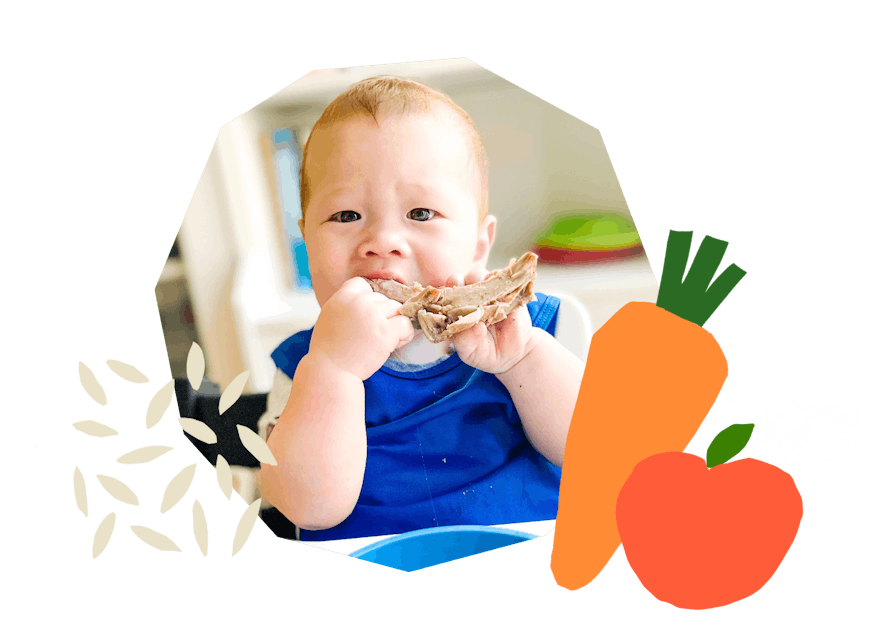
The Program Baby-Led Weaning with Katie Ferraro
A step-by-step digital program for starting solid foods safely and navigating the original 100 FIRST FOODS™ meal plan with baby-led weaning.
 EXPERT-LED, PROVEN APPROACH TO EATING REAL FOOD
EXPERT-LED, PROVEN APPROACH TO EATING REAL FOOD CONCISE VIDEO TRAININGS TO MASTER BABY-LED WEANING
CONCISE VIDEO TRAININGS TO MASTER BABY-LED WEANING 100 FIRST FOODS DAILY MEAL PLAN WITH FOOD PREP VIDEOS
100 FIRST FOODS DAILY MEAL PLAN WITH FOOD PREP VIDEOS
Baby-Led Weaning for Beginners Free Workshop
Is your baby ready to start solid foods, but you’re not sure what to do? Register for this free online video workshop and learn how to give your baby a safe start to solid foods using baby-led weaning. Everyone on this free training receives a copy of Katie’s original 100 FIRST FOODS™ list. You can take this workshop right now, later today when your baby naps, or tomorrow…whatever works for you!
Get baby-led weaning recipes and tips delivered to your email inbox.